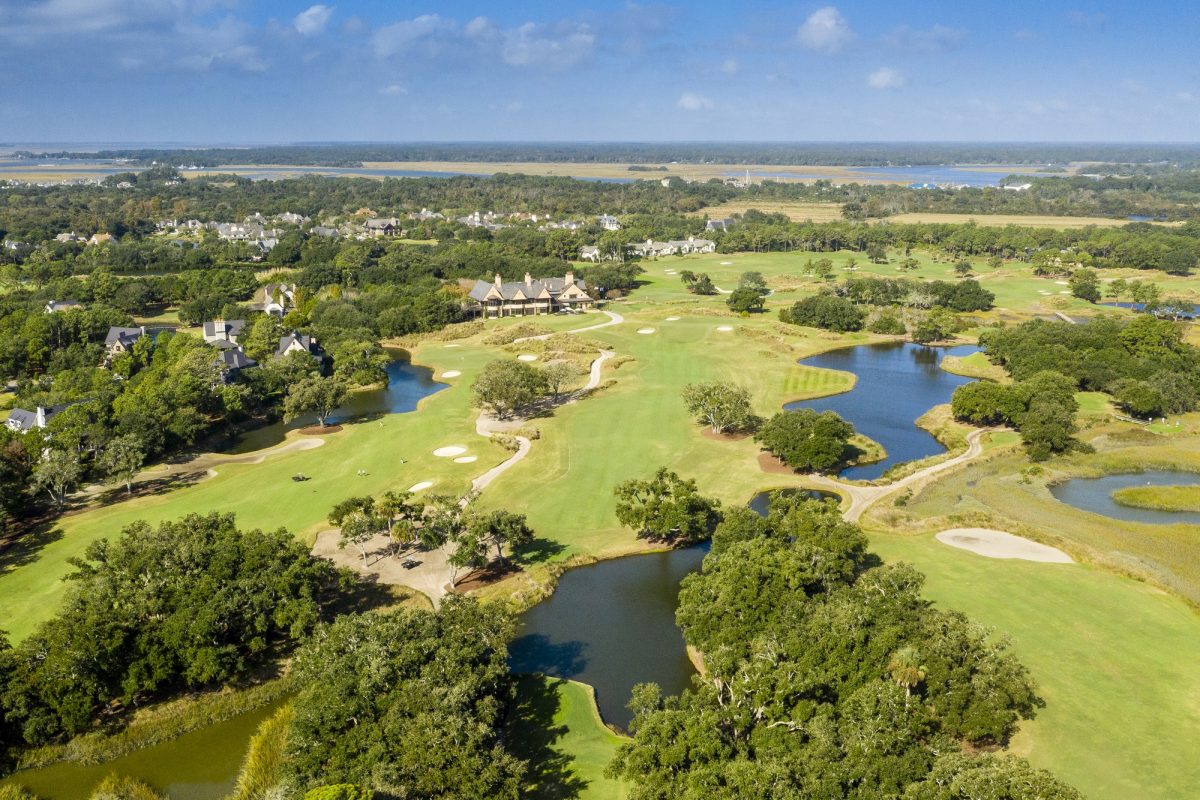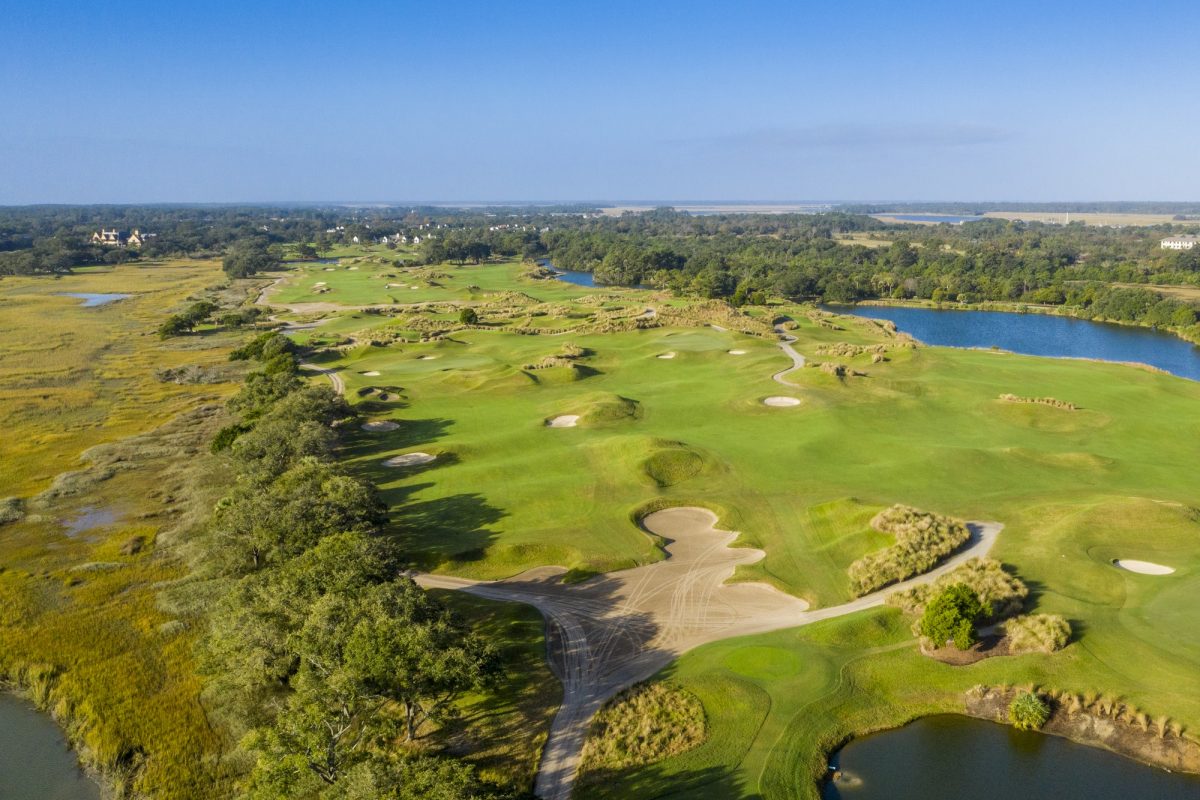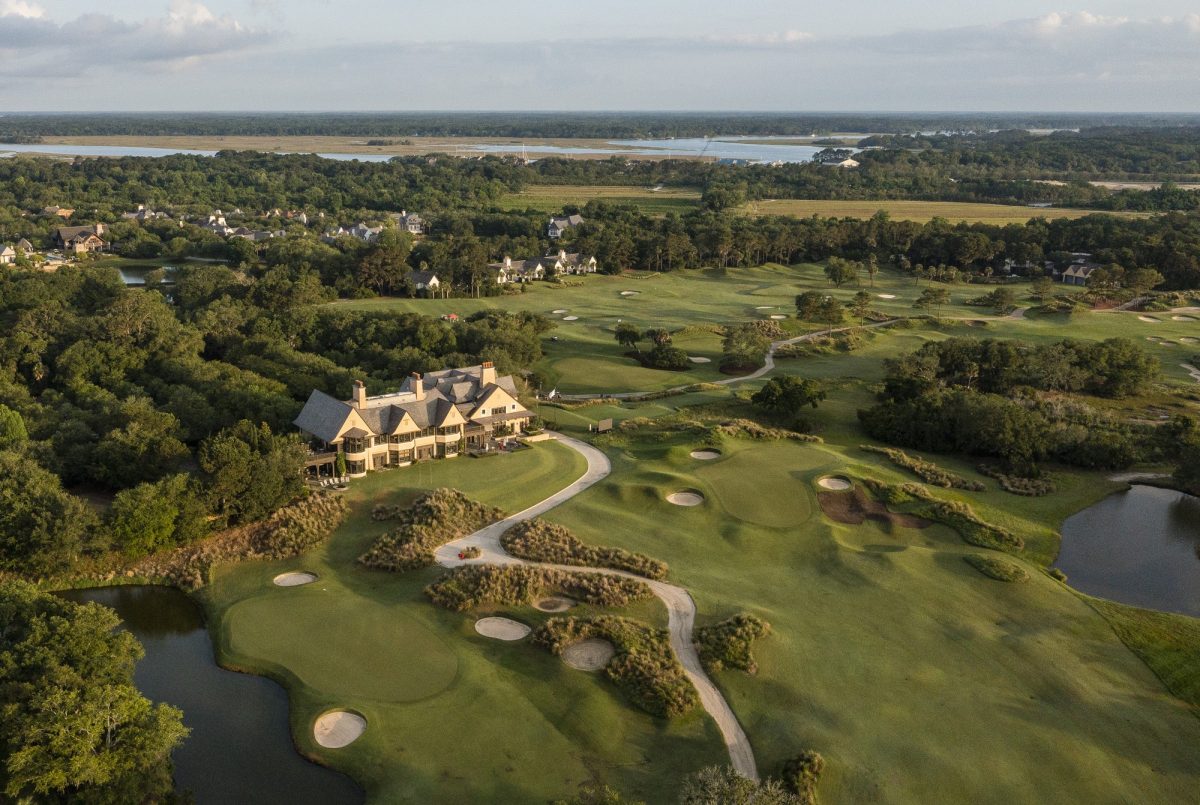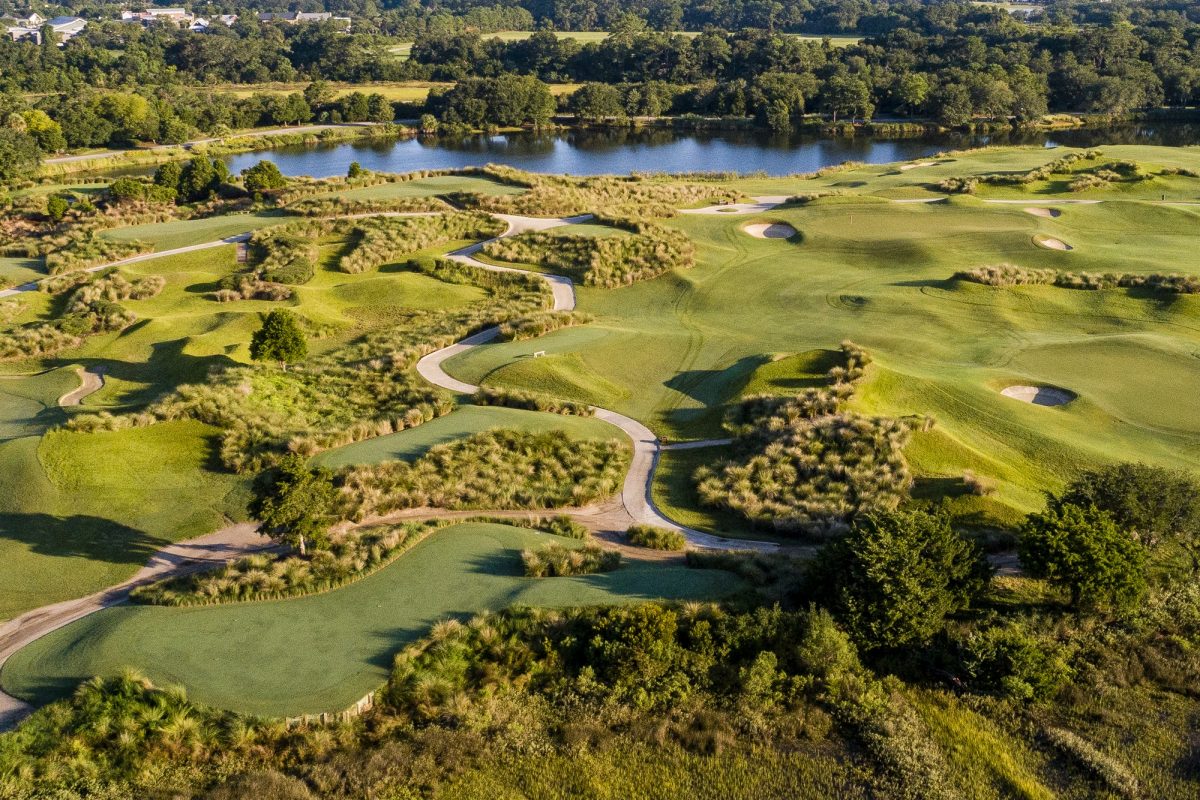A Hole-By-Hole Look at the Cassique Golf Course
Your Personal Guide to the Cassique Golf Course
The Cassique golf course at Kiawah Island Club was designed by the renowned Hall-of-Famer, Tom Watson. He beautifully designed this par-72 links style course through maritime forest and along marshes where the Kiawah River and the Atlantic Ocean meet.
Cassique routinely ranks among Golfweek’s top 100 residential courses and Golf Digest’s top 100 modern courses. The accolades began with its first year position on Golf Digest’s esteemed “America’s Best New Private Courses” list. The South Carolina Course Rating Panel also named Watson’s iconic design one of the “Top 50 South Carolina Golf Courses” in 2018 after beating out fierce competition.

Champion Status
Due to its ranking among other golf courses, it is clear that there is something special about our challenging and competitive Cassique golf course. For an inside look at our world-famous golf course, journeying from hole-to-hole, continue reading below.
Hole 1
The challenges mentioned above begin right away with an intimidating tee shot to start the round. With a slight dogleg to the right and very unique pot bunkering, each player has a choice to make: play it safe or take a risk. You can stay safe down the left side, which usually leads to hitting a mid-to long-iron. Or you can risk the aggressive play, over the bunkers on the right-hand side where the fairway pencil-tips a bit. Whatever you do, don’t go long left, which will put you in a bunker with a difficult up and down. Take it from our pros, the best strategy here is to play to the center of the green.
Hole 2
Our pros suggest laying up instead of risking going for the green in two for this gettable par five. Watch out for the ravine with a six-foot-wide burn that runs in front of the green and is protected by a massive false front. Any ball that doesn’t hit the top of the putting surface will roll back into this ravine. Anything short will spin back.
Tom Trivia: This hole was designed after the 16th hole at Turnberry in Scotland where Watson won the 1977 Open against Jack Nicklaus.
Hole 3
This par 4 includes a strategically placed bunker in the fairway leaving you with a blind shot. Our pros suggest positioning yourself down the left side to give you a clear shot to the green. No matter what way you approach this hole, it is tricky!
Hole 4
There are two routings for this par 4. The “Nip and Tuck” plays the fairway down the left side. Most players are forced to hold back on this one. In order to leave yourself the best angle onto the green, our pros say to carry over the right corner of the bunker on the left.
The other routing, “Pulpit”, takes you up the right side. It can be played multiple ways. It is possible to hit a driver over the fairway bunker but our pros suggest hitting short to play it safe. If you go in that bunker, you’re probably not going to be able to reach the green.
Tom Trivia: The mounds in front of this green are modeled after the 11th hole at Ballybunion.
Hole 5
You can choose between the same two routings on hole 5. The “Nip and Tuck” makes for a good scoring hole if you hit a solid tee shot. However, anything short leaves you in a severe valley so make sure to pick the correct club. The “Pulpit” has you tee off from Mount Watson with a nearly 360-degree view. This short par 3 usually plays into the wind, so the tee shot can be difficult to gauge from that elevation.
Tom Trivia: The inspiration for this green was the “Dell Hole” at Lahinch.
Hole 6
The best line off the tee box is slightly right of the bunkers. This should give you a good angle for your second shot. The green is guarded by a big bunker on the left and a small pot bunker on the right. The front of the green will let the ball run down to the center. The backstop makes this a fairly forgiving green for a long par 5.
Tom Trivia: The bunkers on this hole are patterned after the 14th hole at Carnoustie in Scotland where Tom won his first British Open.
Hole 7
One of the most picturesque holes, you tee off right in front of a pond and overlook an expanse of marshland. Playing to the center of this green is usually the play no matter where the flag is. Three is a good score on this hole. The green is surrounded by bunkers, two on the left side and one on the right, so don’t bite off more than you can chew!
Hole 8
This is probably the most challenging par 4 on the course. It is short at just under 300 yards. Most players hit a long iron or a fairway wood to the center of the fairway. You have to hit over the marsh no matter what tee box you choose to play, so prepare yourself. The further left you go, the further you have to hit the ball and the tighter the fairway gets. The green is approximately 30 feet deep on the back right so your distance control has to be incredibly accurate. If you walk away from this hole with par, you will feel like you’ve made a birdie.
Tom Trivia: Watson patterned this green after the 6th hole at Ballybunion in Ireland.
Hole 9
A large oak tree blocks the right side of the fairway, so you feel like you’re forced to hit down the left. But there’s actually more room down the right than you think! Although the tee pushes you left, take an aggressive line and hit a fade back to right center of the fairway. This green also features one of largest false fronts in America. The way Tom Watson designed the hole was to actually hit a punch shot into the bank and have the bank take all the speed off and pop the ball onto the hill. You could try your best to fly the ball to the top. Any ball that’s short of the slope or that has any spin will eventually end up down at the bottom of the hill.
Tom Trivia: This green was inspired by the 9th green at Ballybunion, although the false front is much more exaggerated here.

Hole 10
Intriguing par 4 – it’s a semi-blind tee shot where you can only see the right side of the fairway. But the play is actually down the left! That will give you a view of the green, whereas playing the right will not. It’s daunting but there is a lot more room than it looks like from the tee box. Aim down the right side and hit a nice draw to the left side of the fairway. Watch out for the pot bunkering in the mounding on the right of the fairway. The smartest play, no matter where the flag is on this green, is to just play to the center because the green isn’t very deep.
Tom Trivia: The idea here was to deceive the golfer on the ideal tee shot direction- similar to the 11th hole at Oakland Hills in Detroit.
Hole 11
This is the longest hole on the golf course at close to 600 yards from the tips. It kinks a bit to the left and then curves back to the right. Trees guard the left side of the fairway, but that’s where you need to hit. The further right you go, the longer the second shot. The safest play is down the center of the fairway. This three-tiered green is one of the most challenging on the course.
Hole 12
This is a strategy hole – it’s more about positioning than hitting it as far as you can for a short club in. A bunker and trees guard the right side if you miss the fairway. The green is two-tiered. There is a slope that runs from front left to the back right, so it’s kind of diagonally portioned. Back left is the most challenging because anything long left runs down into a small valley and some nasty rough. When the flag is on the left-hand side, play for the center of the green.
Hole 13
With marsh and water to the left and beyond the green, this is a phenomenal par 3. There is a three-tiered green: front, back left, and back right. There are three bunkers on the left-hand side and then a waste area long and left. The right side of the green funnels balls off the putting surface. You must try to attack the pin no matter where it is, because finding yourself on the incorrect tier will make for a very challenging two putt. Missing this green in the short right hollow is a chipper’s nightmare regardless of pin location!
Hole 14
This is another risk/reward par 4. The fairway is wide, about 220 off the tee box, and then it starts to get narrower the further you hit it. You can’t see the green from the tee, so use the pines in the background as your goalpost to hit through. There’s mounding down the right side and a waste area to the left. This is the first time on the course where the tree line really pinches the visuals in, and you feel that you have to hit the ball very straight. The green is long and thin and separated by a spine in the middle. The back left is really tough because the green funnels away from you, so fire at it unless your distance control is really good. You can be the most aggressive when the pin is on the front because anything slightly long will spin off the slope down to the hole.
Tom Trivia: This green surface is reminiscent of a potato chip, with a severe roll off on the back left.
Hole 15
This is the signature hole on the course! The fairway is split with bunkering, so you have to go left or right. This is a totally player-dependent hole. People who fade the ball usually play down the right, and people who draw the ball play down the left. Your second shot is guarded by the hell bunker, which sits about 50 yards short of the green. The green is long and incredibly narrow. Two slopes separate three tiers: back, front, and middle right. The back-right tier is like a tabletop – it’s tiny. The length of the green runs slightly left to right, so you need to be coming in on the left in order to have a straight shot up the green.
Tom Trivia: This hole was inspired by the 14th at St. Andrews. The famous “hell bunker” in Scotland has a ten-foot face. The Cassique version is only about five-feet high, but it’s a bit more in play.
Hole 16
Time to dig deep as three challenging holes bring your round to a close. From this tee box you can actually see Mount Watson across the Kiawah River -it’s so beautiful that it’s distracting. There are waste areas up the right side of the hole. On the left side there are two big valleys and one small pot bunker. It’s a challenging tee shot but the green surface is actually pretty big. The smart play on this hole is to hit to the center of the green, which will leave you a relatively straightforward two putt for your par.
Hole 17
This is a cape hole – the fairway curves severely to the right around the marsh. The obvious safe play is a fairway wood down the left side. The further you go left, the longer your approach shot is going to be. Be strategic with your tee shot because this will determine how close you can hit your second shot. This is a narrow green. There is a waste area down the right hand side and severe sloping on the left side.
Hole 18
The round ends with a challenge tee shot. There are two tiers in the fairway, lower left side and upper right side. The smart play is a draw off the right side of the fairway. This will leave you the best line in. There is a large lake in front of, and to the left, of the green. The entire putting surface slopes towards the water. You have to be careful with the spin on the ball in your approach shot. You can use the contouring of the greens, but you run the risk of gathering too much speed and ending up in the hazard. The green has a small tier right of center, which makes for a pretty tricky pin on a shelf. The tournament pin is always back left, and everything funnels down towards the water, so the putting is challenging.
Take your shot and celebrate a round well-played at the Cassique clubhouse.

Make Your Golf Dreams a Reality at Kiawah Island
Kiawah Island is undoubtedly a golfer’s paradise as it is home to some of the top-ranking golf courses in the nation. Here, you may enjoy many rounds of golf while appreciating the breathtaking Lowcountry scenery with your fellow Club Members. In addition, you may track your progress at our cutting-edge Golf Learning Center, which is available only to Kiawah Island Club Members and their guests. Furthermore, an on-site training center will assist you in strengthening muscles required for improved play, preparing you for future successful rounds at our Cassique golf course.
Are you ready to put your skills to the test? To start planning your trip to Kiawah Island, simply click the button below.







